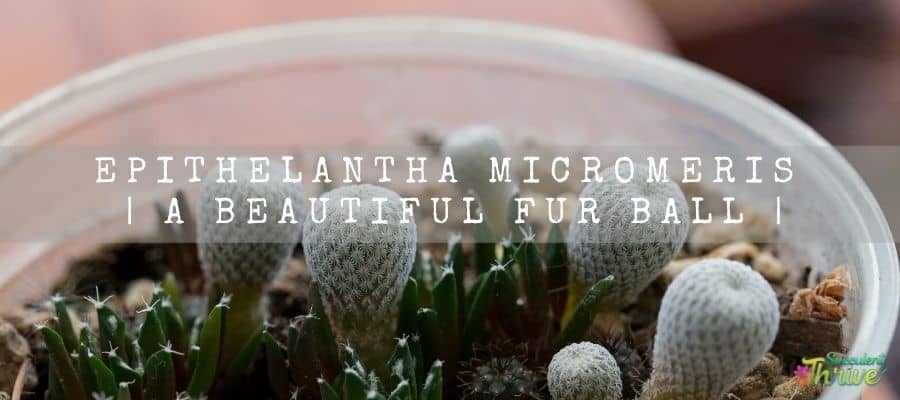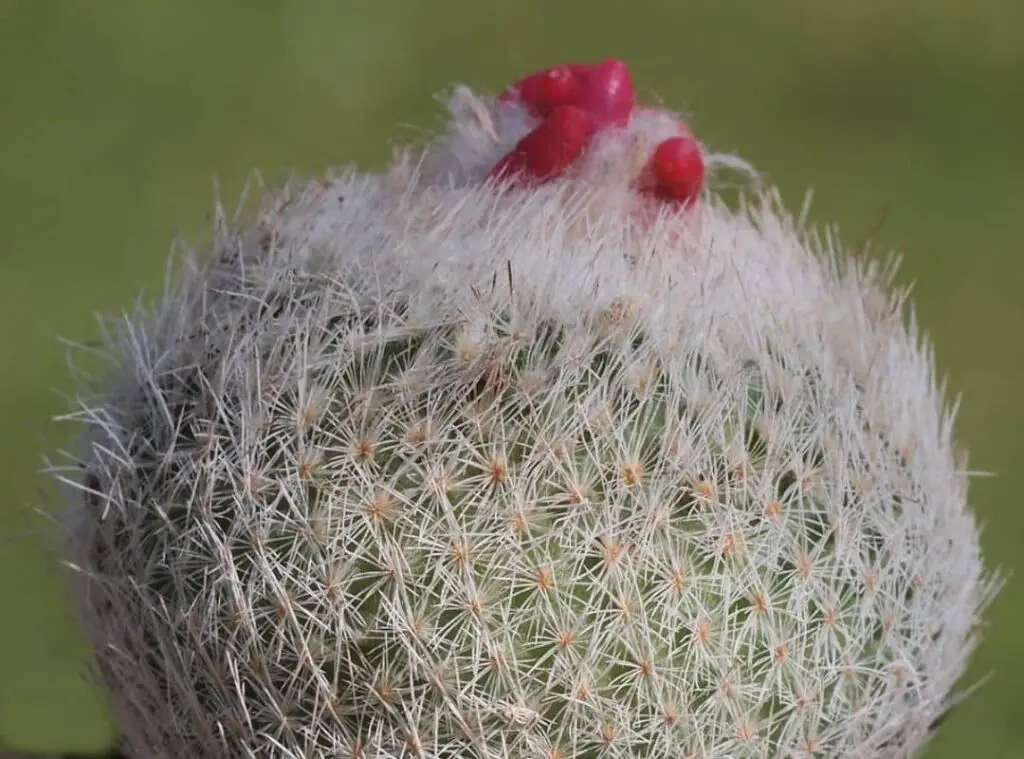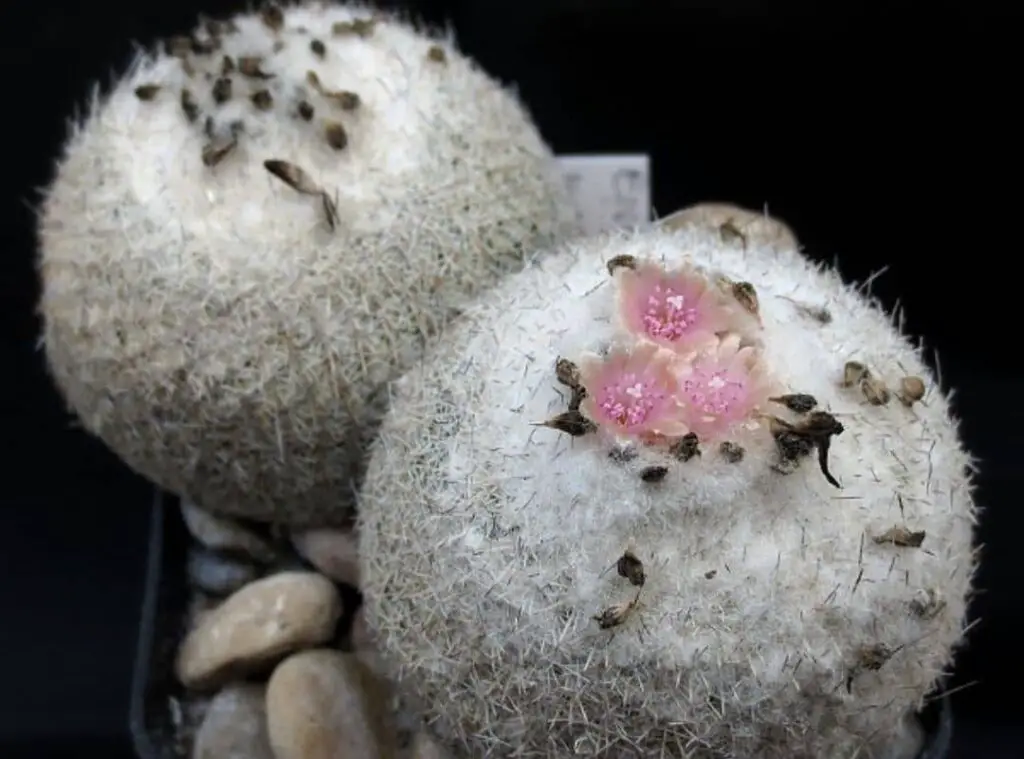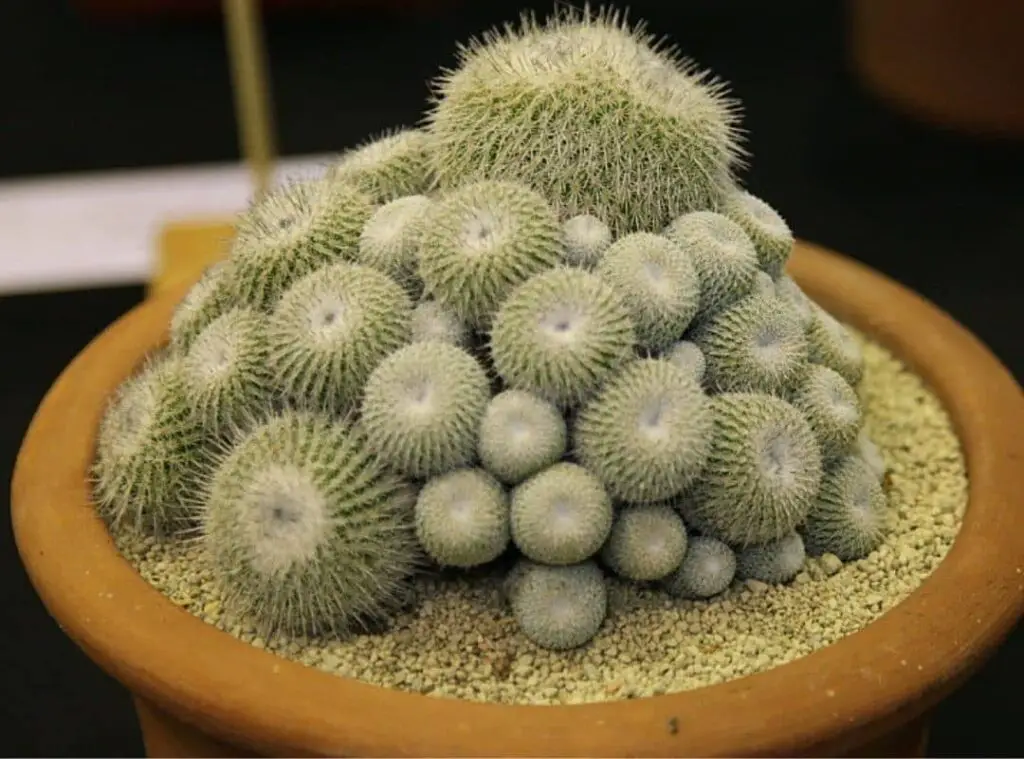Epithelantha micromeris are small cute plants which any succulent lover would fall in love with. Epithelantha micromeris plants common name goes as button cacti.
They would be such amazing plants which will adore the space irrespective of the place you grow them. In fact, many people are fans of these plants, and they tend to grow them in rock gardens, hanging baskets and even in succulent and cacti gardens as well.
Moreover, you could grow them in cute looking planters as well. Epithelantha micromeris require the typical growing care treatments just like the rest of other cacti and succulents.
Epithelantha micromeris is further known as pin pong ball cactus as well. They belong to the Cactaceae family, and they are endemic plants to Madagascar.
So, if you are one of those proud owners of Epithelantha micromeris and wondering what care treatments you need to practice, then it would be worth reading this article.

How do I identify Epithelantha micromeris?
Epithelantha micromeris are little plants which would reach a maximum height of 12 inches ( 30.5 cm) only. Further they would be 36 inches ( 91 cm) in diameter when they grow to their best potential.
Epithelantha micromeris is prominent in dark green color. However, they would comprise small radial spikes. They would be either white or gray in color. Hence one might think they look white or gray in color too .
Apart from that, Epithelantha micromeris bloom in pink, white colored flowers. They are small in size. In fact, these are the smallest flowers out of all the cactus species.
In addition to that, Epithelantha micromeris flowers are edible too. Once they complete the flowering, they would transform into a cylindrical bright red colored fruit which will consist of black seeds.
Growth rate
Epithelantha micromeris are slow growing plants.
One look care guide
| Botanical Name | Epithelantha micromeris |
| Common Name | Button cacti, Ping pong ball cacti |
| Plant Type | Cactus |
| Mature Size | 12 inches ( 30.5 cm) in height. 36 inches ( 91cm ) in diameter |
| Sun Exposure | Full sunlight to partial shade |
| Soil Type | Well draining |
| Soil pH | Neutral |
| Bloom Time | Spring |
| Flower Color | pink, white colored |
| Hardiness Zones | USDA hardiness zone 9a 20 |
| Native Area | Madagascar |
| Toxicity | Non toxic |
| Average price | $ 24 |
How do you take care of Epithelantha micromeris?
Light Requirement
Epithelantha micromeris have strong requirements when it comes to sunlight as only then they could grow to their best potential.
Epithelantha micromeris are strong sunlight lovers. In fact, they will enjoy full direct sunlight. I suggest growing them outdoors due to this requirement.
Having said that, you can also grow them indoors as well. You may choose a bright sunny spot to plant them. They can also grow well in partial sunlight.
So, when you select a place to grow them, it should be a place where they can gain both full sunlight and partial shade.
Ideally it needs to be a place where they can absorb morning direct sunlight. Be mindful of that. Furthermore, if you wish to supplement the indoor sunlight, you could place grow lights closer to the plants.

Temperature and humidity
You need to be mindful of the temperature and the humidity aspect of these plants as proper temperature and humidity levels are crucial in having a firm growth of Epithelantha micromeris.
Warmer temperatures right throughout the year is what these plants need. However, they can withstand the subzero temperatures as well.
In fact, they can tolerate colder temperatures up to 20 degrees Fahrenheit (-6.7 degrees Celsius). However, these are not frost hardy plants.
So, do not leave them exposed to the colder temperatures for too long. I recommend growing them indoors during colder times to protect the plants from such unhealthy conditions.
Is it cold hardy?
Epithelantha micromeris cannot withstand the colder conditions for too long as aforesaid.
Zone
Epithelantha micromeris grow well in USDA hardiness zone 9a where the minimum temperature would be 20 degrees Fahrenheit ( -6.7 degrees Celsius).
Watering Requirement
Watering is the most critically important factor in terms of taking care of these plants well. In other words, if you do not want to kill the plants, you should refrain from over watering them.
Epithelantha micromeris especially are quite sensitive towards over watering as it would pave the way for root rot.
If you are a succulent lover, you know how severe the repercussions of the root rot would be. Epithelantha micromeris are adapted to grow in hot and dry conditions which literally reflect on the fact that they just don’t like wet feet.
So, they can perform well with minimum water. If you wish to have a healthy growth of your precious Epithelantha micromeris, you should never leave their feet in soggy soil.
To refrain from over watering the cactus, you need to always check the soil condition first and then apply water.
Literally, if the soil is dry, you can water them. On the other hand, if it is moist, you need to refrain from watering them for a couple of days.
Always ensure that you let the substrate wither between two watering sessions. However, if you accidentally pour water on them, you need to immediately let them as unless it would be harmful for the plants.
Soil Requirement Type / pH
Epithelantha micromeris perform well if you provide a substrate which is excellent draining.
Having excellent drainage is the most crucial factor when selecting the right soil mix to grow them so that it would allow the excess moisture to move out from the pots without retaining them in the pot.
If you wish to make a fast-draining soil mix, you can make a mix of potting soil, turface and crushed granite. When you add crushed granite, it would allow the substrate to have a proper aeration too.
Pot size Potting and Repotting
I encourage growing the Epithelantha micromeris in terracotta pots as they are high in porosity.
The porous pot materials would suit them the best as it would allow the excess moisture to drain away from the pots. In addition to that, the selected pots need to have a generous drainage as well.
Consider repotting them once every two years. You do not need to repot them often as these are slow growing plants.
However, when you repot them once every two years, it would allow the plants to grow freshly and vigorously.
If you keep growing them in the same pot, the nutrients would be depleted. So, once you repot them freshly, it would allow the plants to gain nutrients freshly.

Where to Plant?
Epithelantha micromeris are not tolerant of colder conditions. As such you need to keep that in mind and then select a spot where the plants will not be exposed to these frost conditions.
If you are someone who goes through these conditions, best is to grow them indoors. Or else you could plant them in containers and place them outdoors during summer and bring them indoors during winter.
If you live in the aforementioned zones, you can choose a place where they can gain partial shade during the hottest hours of the day and full sunlight during the morning hours. If you want to grow them indoors, choose a bright sunny windowsill.
Fertilizer and time of year
Fertilizing would be effective in stimulating vigorous growth in the plants.Best would be to feed them during their active growing season.
In terms of the fertilizing frequency , you may feed them twice or thrice a year in spring and summer. Further best is to proceed with a mild fertilizer for this purpose.
Flower
Button cactus blossom with small pink or white colored flowers. As aforesaid these are small flowers and smallest of all the cacti species as well. What is more special about these flowers is that they are edible.
Dormancy
Epithelantha micromeris are winter dormant plants.
Toxicity
Epithelantha micromeris are nontoxic plants. However, you need to protect yourself from the plant’s spines as chances are that those spins could irritate your skin. Ideally you need to wear gloves before interacting with the plants.
Common bugs and illnesses
Epithelantha micromeris are somewhat resistant to pests attacks usually. However , they may be susceptible for regular pests’ attacks from aphids, mealybugs and for scales as well.
These pests would be quite attractive towards these plants particularly if there are favorable conditions for them. In addition to that, excess moisture could pave the way for over watering, and it will end up creating root rots in the plants.
If root rot gets severely spread, chances are that your precious Epithelantha micromeris may die too.
Special Care tips
Epithelantha micromeris require a little care treatment as aforesaid. To Sum up, you need to just assure that these plants can get sufficient sunlight , warmer temperatures, and a well-draining soil mix.
Benefits
Epithelantha micromeris are useful to plant in any succulent cactus arrangement. Besides, you may use them as decorative plants in your workspace or even in your home.
Further They would be great picks for hanging baskets too. You may also grow them in your outdoor gardens too

How to propagate Epithelantha micromeris?
Propagating the Epithelantha micromeris is not that hard. You may simply use seeds or their seeds to propagate them. Further you may also use the division method to propagate them.
If you wish to use the stem cutting propagation method into practice, you need to simply remove the offset from your plants using a sterile knife.
Next, set it up in a dry place which will allow them to develop callus. When they develop callousness, you may simply go ahead and plant them in a fresh soil mix.
After a few weeks’ time, you could continue with the regular care treatment for them. If you wish to use the seeds propagation method you could do it indoors.
However ensure that they get adequate sunlight there. Further I recommend using a seed mat as that will increase the success of the propagation.
Conclusion
So, if you wish to add some unusual unique looking set of plants consider adding these amazing plants as they would adore the whole space irrespective of the place you grow them.
They would make great pairs with Sedum clavatum in particular. Hope you are now all set to start growing them.
Read Next : Echinocereus Triglochidiatus | A Special Cactus |


